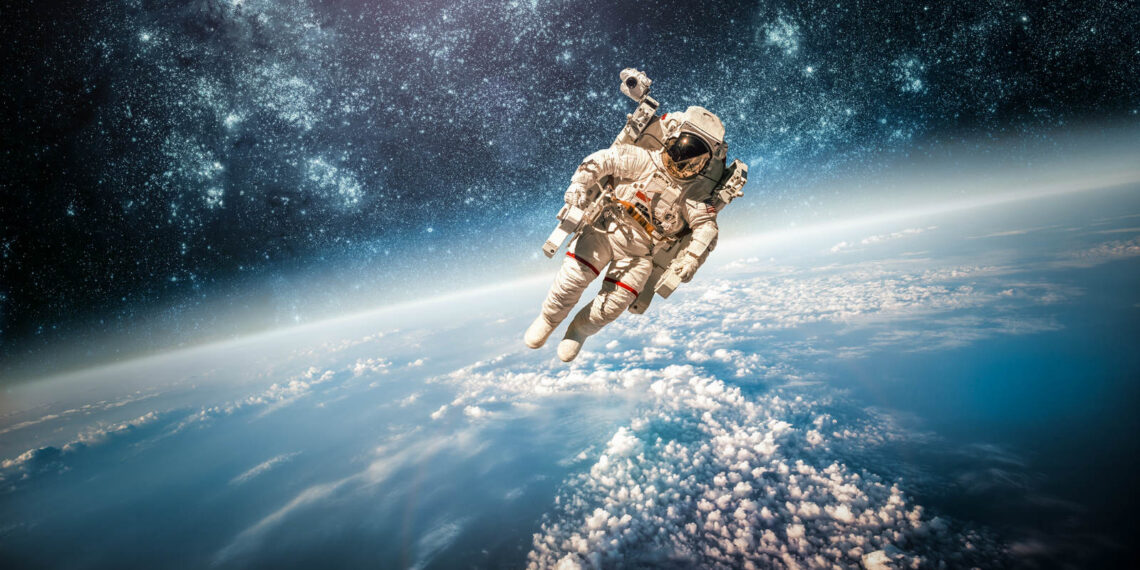The Evolution of Suborbital Flights: From Concept to Reality
Suborbital flights, once a realm of science fiction, are rapidly transitioning into reality, promising a unique perspective of Earth and a taste of space for a wider audience. This evolution is fueled by technological advancements and increasing private investment.
1. Early Concepts and Rocket Pioneers
The idea of suborbital spaceflight dates back to early rocket pioneers like Robert Goddard and Hermann Oberth. These visionaries imagined rockets not only for scientific exploration but also for human transportation beyond Earth’s atmosphere. However, the technological limitations of the early 20th century meant that these concepts remained largely theoretical. The development of rocketry during World War II and the subsequent space race between the United States and the Soviet Union laid the groundwork for future suborbital endeavors.
2. The Rise of Private Space Companies
The 21st century witnessed a significant shift with the emergence of private space companies. Entrepreneurs like Richard Branson (Virgin Galactic) and Jeff Bezos (Blue Origin) invested heavily in developing reusable suborbital vehicles. These companies aimed to democratize access to space by offering relatively shorter and more affordable spaceflights compared to orbital missions. This new era marked a departure from government-led space exploration to a more commercially driven approach.
3. Key Technologies Enabling Suborbital Flights
Several key technological advancements have been crucial in making suborbital flights a reality. Reusable rocket technology, advanced propulsion systems, and lightweight composite materials have significantly reduced the cost and complexity of spaceflight. Furthermore, sophisticated flight control systems and improved safety measures have enhanced the reliability and passenger experience of suborbital missions. These innovations are paving the way for more frequent and accessible space tourism opportunities.
SpaceX Missions: Pioneering the Path to Commercial Space Travel
SpaceX’s groundbreaking missions are reshaping space tourism, transitioning it from a theoretical concept to a tangible reality. Their efforts are significantly lowering barriers to entry for space travel.
1. Reusable Rocket Technology
SpaceX’s Falcon 9 rocket features reusable first stages, dramatically reducing the cost of each launch. This reusability is crucial for making space tourism more affordable and accessible. By recovering and reusing rocket stages, SpaceX minimizes the need to build new rockets for every mission, leading to significant cost savings that can be passed on to space tourists. This innovative approach is a cornerstone of their strategy to democratize space travel.
2. Inspiration4: A Landmark Mission
Inspiration4 marked a turning point by sending the first all-civilian crew into Earth orbit. This mission demonstrated the feasibility of space tourism for individuals without professional astronaut training. The success of Inspiration4 has paved the way for future commercial spaceflights, inspiring confidence in the safety and accessibility of space travel for a wider audience. It also generated considerable public interest and excitement around space tourism.
3. Starship Development and Lunar Ambitions
SpaceX is developing Starship, a fully reusable spacecraft designed for deep-space missions, including lunar tourism. Starship’s large payload capacity and reusability promise to further reduce the cost of space travel, making destinations like the Moon more accessible to tourists. The DearMoon project, planned for 2024, aims to send a group of artists and creatives on a lunar orbital mission, showcasing the potential of Starship for future tourism ventures beyond Earth orbit.
Experiencing Zero Gravity: The Science and Sensation
Zero gravity, or microgravity, offers a unique physiological experience, challenging our bodies’ usual responses to Earth’s constant gravitational pull. It’s a key element of space tourism, promising an unforgettable sensation.
1. The Science Behind Weightlessness
Weightlessness isn’t the absence of gravity; it’s the absence of support. In orbit, spacecraft and their occupants are constantly falling towards Earth, but their forward motion keeps them circling the planet. This freefall creates the sensation of weightlessness. On parabolic flights, airplanes fly in a specific arc, creating brief periods of weightlessness as they crest the top of the parabola. This allows passengers to experience a similar sensation to being in orbit without actually leaving the atmosphere.
2. Physiological Effects on the Human Body
The human body is highly adapted to Earth’s gravity. In zero gravity, fluids redistribute, leading to facial puffiness and leg shrinkage. The lack of weight-bearing on bones can lead to bone density loss over extended periods. Spatial orientation is also affected, as the inner ear, which helps with balance, struggles to adapt to the lack of a consistent “down” direction. These effects are generally temporary during short space tourism flights, but require careful consideration for longer space missions.
3. Sensory Experiences in Zero Gravity
Floating freely is often described as euphoric. Without the constant pressure of gravity, movements become effortless. Everyday actions like eating and drinking become novel experiences, requiring special equipment to prevent food and liquids from floating away. Visual perception can also change, as the brain adapts to the lack of a clear visual reference point for “up” and “down.” Many people report a heightened awareness of their body and its position in space.
4. Training and Preparation
While short zero-gravity experiences are generally safe, some preparation is recommended. Passengers often receive briefings on how to move safely in weightlessness and manage potential motion sickness. Physical fitness is helpful but not always required, depending on the specific space tourism provider. Understanding the potential physiological effects and learning techniques to control movement can enhance the overall experience and minimize discomfort.
The Role of Spaceports in Facilitating Space Tourism
Spaceports are vital infrastructures that enable space tourism, acting as launch and landing sites for spacecraft and providing necessary support services. They are the gateway to space for tourists.
1. Infrastructure and Facilities
Spaceports offer specialized infrastructure crucial for space tourism. This includes launchpads designed to handle various spacecraft, control centers for monitoring flights, and passenger terminals equipped for pre-flight preparations and post-flight recovery. Furthermore, spaceports often provide facilities for spacecraft maintenance, fueling, and storage. The development of advanced technologies in spaceports is essential for ensuring safe and efficient space travel for tourists.
2. Safety and Regulation
Safety is paramount in space tourism, and spaceports play a key role in ensuring passenger safety. They adhere to strict safety regulations and protocols, including pre-flight vehicle inspections, emergency response plans, and medical facilities. Regulatory bodies oversee spaceport operations to maintain safety standards and minimize risks. Spaceports also provide training for space tourists, familiarizing them with safety procedures and emergency protocols.
3. Economic Impact and Job Creation
Spaceports stimulate local economies by attracting investments and creating job opportunities. The construction and operation of spaceports require skilled labor in engineering, technology, and tourism-related services. Space tourism activities generate revenue for local businesses, including hotels, restaurants, and transportation services. The presence of a spaceport can also boost tourism in the surrounding area, attracting visitors interested in space-related activities.
Q&A
Question 1: What are the key technological advancements driving the rise of suborbital space tourism?
Answer: Several key technologies have made suborbital flights a reality. Reusable rocket technology significantly reduces costs. Advanced propulsion systems and lightweight composite materials improve efficiency and reduce complexity. Sophisticated flight control systems and enhanced safety measures improve reliability and passenger experience, paving the way for more frequent and accessible space tourism.
Question 2: How do private companies like Virgin Galactic and Blue Origin differ in their approach to suborbital space tourism?
Answer: While both Virgin Galactic and Blue Origin offer suborbital flights, they differ in their current status and pricing. Virgin Galactic’s flights are operational, with a ticket price of $450,000. Blue Origin’s flights are still under development, and the ticket price is not yet publicly available. They also likely differ in their specific vehicle designs and operational procedures, though these details are not provided in the text.
Question 3: What are the main physiological effects of experiencing zero gravity, and how are these addressed in space tourism?
Answer: Zero gravity causes fluid redistribution (facial puffiness, leg shrinkage) and bone density loss over extended periods. Spatial disorientation also occurs. For short suborbital flights, these effects are generally temporary. Space tourism providers address these through briefings on safe movement in weightlessness, and preparation for potential motion sickness. Longer missions would require more extensive countermeasures.
Question 4: What role do spaceports play in facilitating space tourism, and what safety measures are in place?
Answer: Spaceports are crucial infrastructure, providing launch and landing sites, control centers, passenger terminals, and maintenance facilities. They ensure safety through strict regulations, pre-flight inspections, emergency response plans, and medical facilities. Regulatory bodies oversee operations to maintain safety standards and minimize risks. Spaceports also provide safety training for tourists.
Question 5: How does SpaceX’s approach to space travel, particularly with reusable rockets and missions like Inspiration4, differ from other companies mentioned?
Answer: SpaceX distinguishes itself through its fully reusable Falcon 9 rocket, drastically reducing launch costs and making space travel more accessible. Inspiration4 demonstrated the feasibility of all-civilian orbital spaceflights, showcasing a different model than the suborbital flights offered by Virgin Galactic and Blue Origin. Furthermore, SpaceX’s Starship program aims for lunar tourism, a goal beyond the scope of the other companies mentioned.






